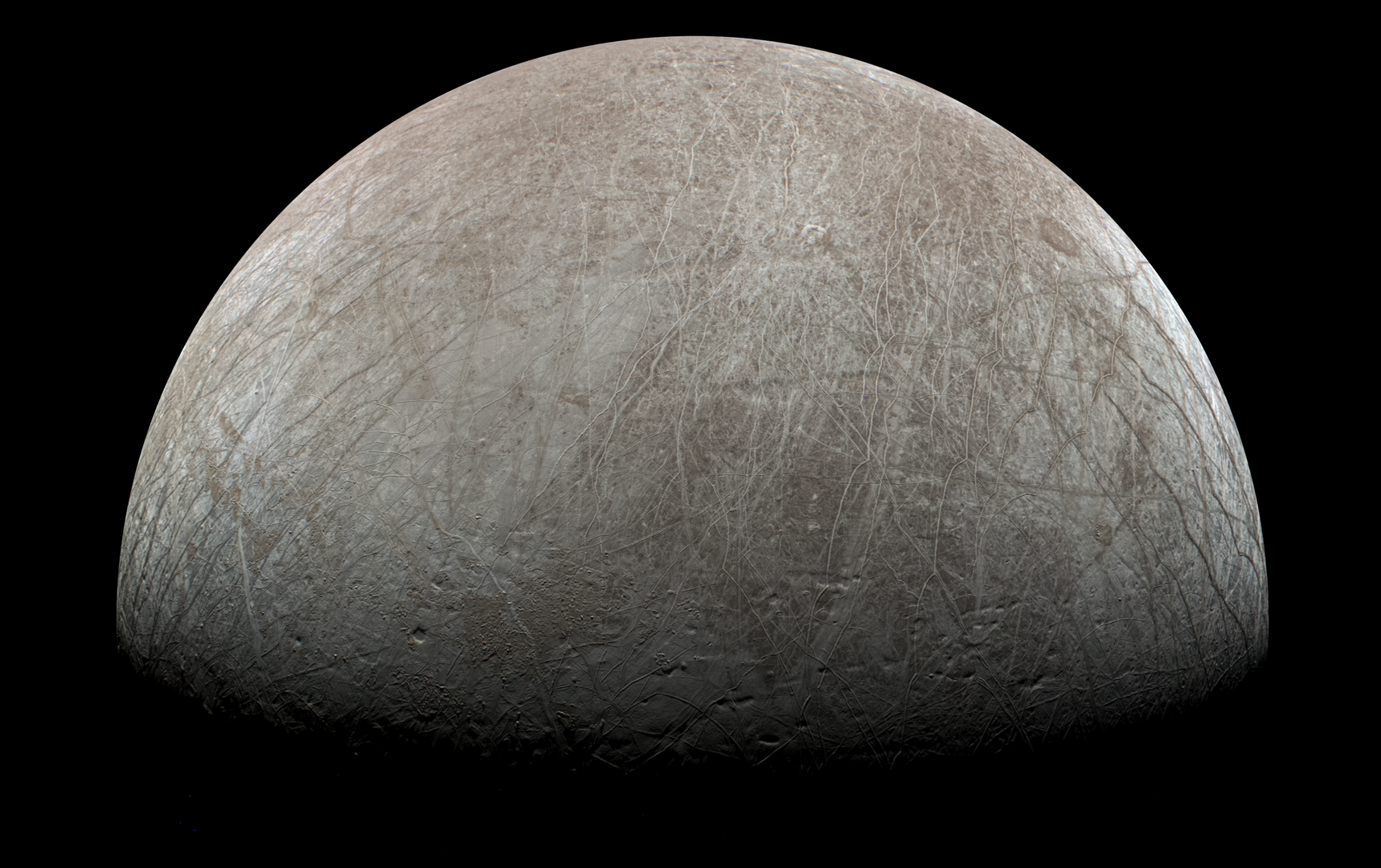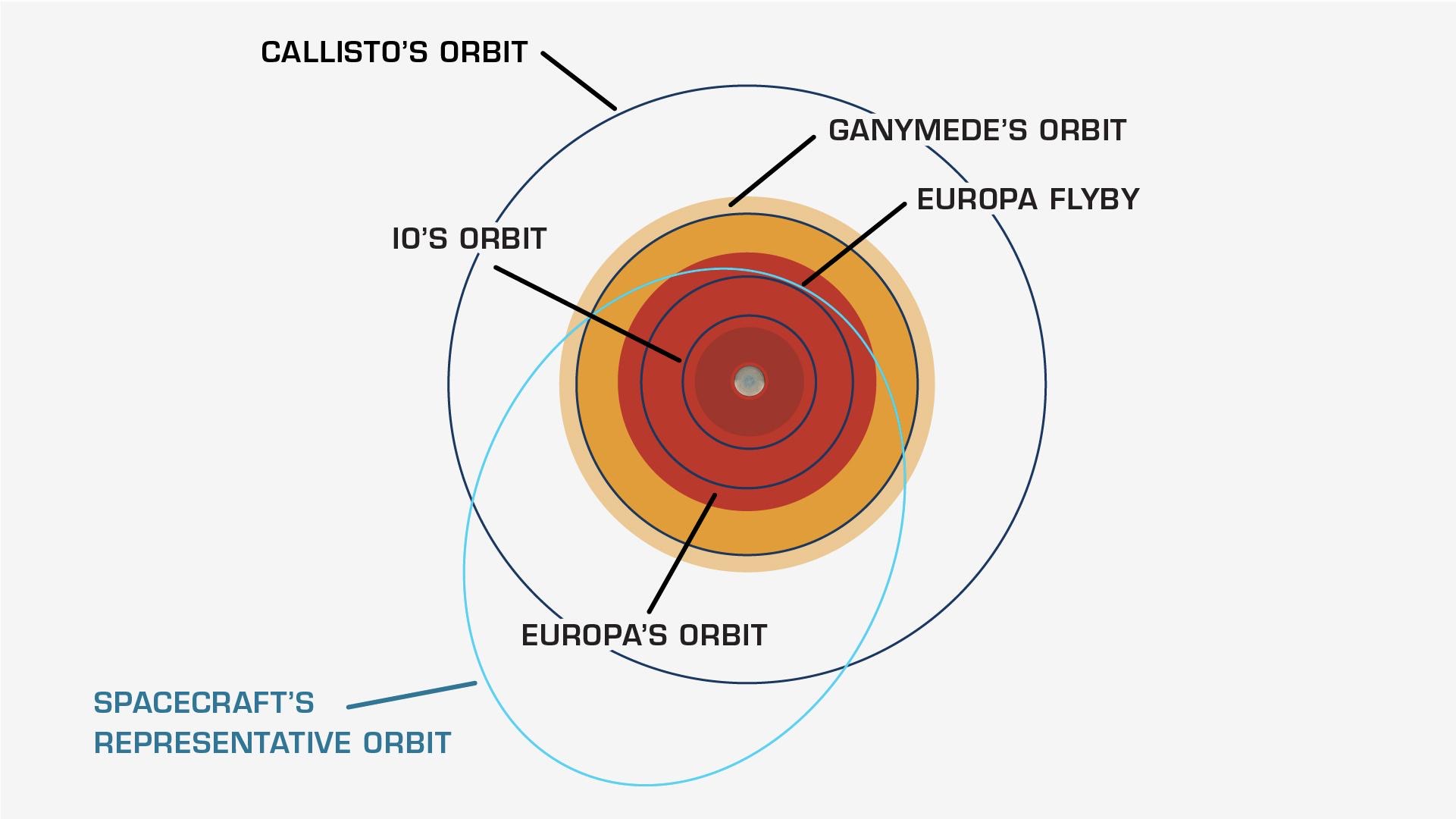There are aliens in the solar system (but probably not on Earth)

Launched in October, this year, is a mission that scientists have said is most likely to find the possibility of life. Not random scientists. NASA scientists! This mission is to a moon in our own solar system - in our own backyard. One scientist said that if we did not find life there, it would be “profound”.1
The mission is to Europa and it is incredibly exciting.
Europa is a moon of Jupiter; it’s the fourth largest of its 95 moons and is one of the reasons early philosophers knew the Earth to not be the centre of the universe.2 There are a bunch of reasons this cold rock is of such interest. In short:
- We’re almost certain it has a salt water, liquid ocean.
- We’re almost certain is has to tectonic-like movement.
- We’ve made some wild guesses about some discolouration, which could be an organic compound.
The current state of understanding of the fundamental requirements for life are:
- Water
- Energy
- Essential chemical building blocks3
Hold on a second. Holy crumbs. Do they all match with our expectations of Europa? Yes!
The fact that Europa’s water is almost certainly salt water - we know this because it has an unusual magnetic interference that we know is caused by large bodies of salt water - does not hinder life at all. Life started on earth in our salt water oceans. In fact, most life continues to live in those oceans.
There are three ways we know4 of that Europa uses to access energy. The first is the most obvious, but is also the least useful: sunlight. Whilst we get almost all of our energy from Sol, Jupiter is 780 million kilometres away from the sun. That’s five times further than we are. It will be getting some energy from it, but not so much.
The second method is also similar to Earth: an iron core. It’s likely that this, or at least the surrounding crust of this core, is molten enough to produce under-sea volcanoes. You’ll note that these exact kinds of “vents” are where Earth-life began. This heat energy comes from Jupiter’s gravitational energy flexing the moon’s geology. Europa has an elliptical orbit around the gas giant, so its pull to the planet is waxing and waning - pulling and relaxing the iron core. This causes friction. Much like friction you’re used to, it produces heat. It’s not only the heat from the core though: the icy crust of the moon also shifts and slides as it thaws, freezes, and is pulled (by Jupiter). That too keeps the planet from falling to absolute zero.
A third method is also one we use on Earth: radiation. Europa is constantly bathed in incredibly high levels of radiation from Jupiter. Whilst we know this is typically very bad for Earthen life, there are two reasons we still hope to find Europan life. First, signs of life are expected to be underneath the icy crust. This crust is 150 kilometres thick of ice as hard as granite. That provides a considerable shield. Second, maybe life, evolved under high radiation, finds a way.
We know Europa has a high amount of energy because we’ve seen the ice heal itself. So, liquid water must be coming from below and refreezing when cracks or collisions with meteors occur. There are shockingly few meteor craters on Europa. It’s the smoothest rock in our entire solar system. We also know that there are huge pressures moving the ice: Europa has distinctive lines, as if the ice has been torn apart. The only way we know that happens is through tectonic movement as we see on Earth.
But what about those building blocks? This is another completely fascinating part of Europa. Those volcanoes are crucial here: they act as big, alchemical melting pots where chemistry just accidentally happens, producing carbons and those other essential materials. But it’s not likely an ocean planet can provide that entirely. We’ve seen sulfuric acid and sulfur dioxide, even hydrogen peroxide, on the moon which it just can’t make itself. So there where did it come from?
Io is another moon of Jupiter which is much closer to its parent body, and so much more bathed in the boiling radiation. There is no water on Io, at least not for billions of years. It would boil off instantly. It has almost no atmosphere and is bursting with energy that presents itself in near constant, explosive volcanoes. Since the atmosphere is so weak, anything it chucks up is ejected from the planet. It’s expected that these compounds are thrown into space, which Europa scoops up. Then, Europa’s rolling ice pulls that under to the oceans below.
Europa Clipper
We first saw Europa in 1610 through a telescope on Earth. Since then we’ve developed better imaging and lens, but the tiny moon is still very far away. So, in 1973 Pioneer 10 managed to obtain some kind of blurry images, but still enough to reveal more secrets to scientists. In 1979, Voyager 2 took a fudging beautiful photo of Europa. These clearer images gave us a lot of excitement about water on the moon. We seemed to stop caring until the late 90’s, when the Galileo space probe was sent on an eight year orbit of Jupiter. In 2007 we sent New Horizons, which was on its way to Pluto. In 2022, Juno flew by Europa just 352 kilometres above the surface!
Each new mission got us more and more excited about finding another place in the system which could have life on it. So, the Europa Clipper was launched a couple of months ago.
It has a long journey to go on, and not a direct one! It is not currently going towards Jupiter. Instead, its first going to Mars where it will slingshot around, using its gravity to get an extra boost. That’s a huge saving on fuel! Then, it will actually come back to Earth for a similar manoeuvre. It’ll skim past us 3200 kilometres away, so not likely visible. At that point, it will be travelling at its fastest acceleration towards Jupiter. When it gets there, it will need to use its engines again to break, for six hours. Imagine going so fast in your car that you need to start breaking six hours before your destination.
It will get to Jupiter in April 2030 and make its first flyby of Europa in Spring 2031. The plan is for it to get 25 km from the surface. That’s wild! The ISS is 400 kilometres above Earth.
The Clipper is a dedicated mission to confirm the potential of habitability on the planet. It’s specifically outfitted with gear that will allow it to image underneath the ice to double check our theory that there’s a tonne of water under there. It will be able to image every inch of the moon over its four years of time orbiting Jupiter and Europa.
Jupiter and Europa? Yes! Due to the massive radiation around Jupiter, the Clipper can’t handle orbit around just Europa, which would leave it in the highest bands of the radiation for too long. So, it will do an elliptical orbit, swinging (literally!) around both Jupiter and Europa 49 times. Much of the weight of the orbiter is the titanium and aluminium housing that protects instruments from the worst of the blasts.

Like all our probes, Clipper will have solar panels. These guys are huge though! Its solar array spans 30 metres and is 5 metres high. I don’t entirely understand what this energy is used for. Obviously, the tech on board uses it. But can it use this energy for fuel? Or is it entirely reliant on the fuel it has from Earth for movement? Or, does it not need to use fuel at all once it’s in the orbit it wants?
Staggeringly, the Clipper can communicate with us just fine using the Deep Space Network. That’s a whole other interesting topic which involves at least four sets of 70 metre wide antenna, in three places on Earth.
At the end of the 49 flybys, the mission is expected to end. The Clipper, quite pleased with itself, will nobly degrade onto the surface of Ganymede. I have not found anyone talking about why Ganymede and not just onto Europa. I like to think that it’s because we’re all quite hopeful that life is on Europa, and we don’t want to disturb it.
Habitability
When NASA is reading from official statements, they make it quite clear that this is not a life finding mission. They’ve no expectation of finding anything alive up there, or so they say. The mission is to check if Europa does have these three markers of life. And then, if there’s nothing there, we know that there must be another marker we’ve not realised yet.
However, watch any of the interviews with these scientists and they just can’t hide their excitement. There’s high confidence that we’ll find signs of something on Europa. Likely, single celled stuff.
Earth has been through a number of near mass extinction events. Life on Earth has been a single, uninterrupted thread of evolution for 4.1 billion years. That’s despite five major extinction events that drove life to its extremes. Many times the planet has frozen over completely but never has our evolutionary line been broken. The thing that saved us, time after time? A warm core, where liquid water could continue to flow, fuelled by undersea vents throwing up nutrients.
Just like on Europa.
References in no order and loosely presented:
- https://europa.nasa.gov/mission/faq/
- https://science.nasa.gov/jupiter/moons/europa/
- https://science.nasa.gov/mission/europa-clipper/
- https://europa.nasa.gov/mission/about/
- https://youtu.be/q88fSdGMbys
- https://www.loc.gov/programs/poetry-and-literature/poet-laureate/poet-laureate-projects/a-poem-for-europa/
- https://www.britannica.com/place/Europa-satellite-of-Jupiter
-
This was Professor Brian Cox, in Solar System (2024, BBC). Well worth watching. It’s exciting and inspirational. ↩
-
In 1610, two people discovered the four massive moons around Jupiter. Galileo Galilei and Simon Marius were both investigating Jupiter at the same time, curious about the fuzzy, dark patches they could see on their fuzzy telescopes. They both realised that these dark patches changed location, in the same way that our moon sometimes casts a shadow on Earth. This meant that there were other celestial bodies orbiting something other than Earth, proving the theory that Earth was not the most important planet (and shaking faith that The Maker cares all that much about us). ↩
-
I’ve actually not looked into this. It’s sort of obvious - you could make a guess at what this means - and also very complex. These chemicals are things like bonding agents (proteins, for instance), mechanisms for sending messages around the organism, ways of carrying energy to places its needed. ↩
-
At least three ways I know, and will be mentioning here. Maybe there are others. ↩